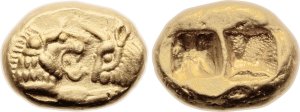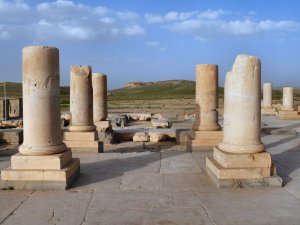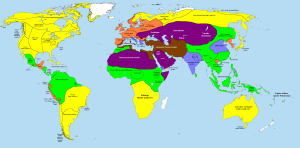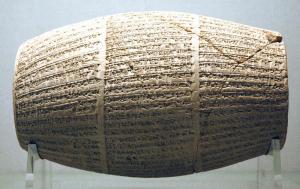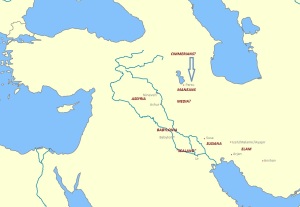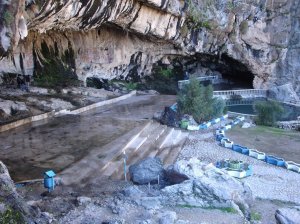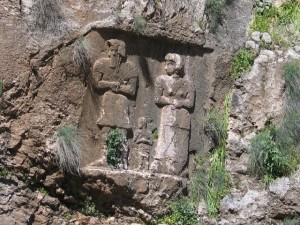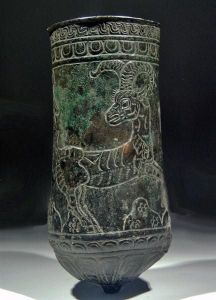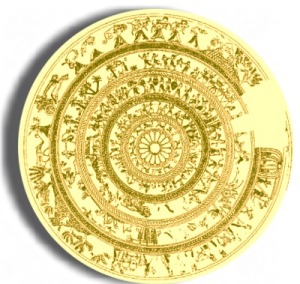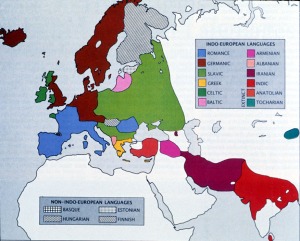I just uploaded the first episode of a special short-series on the Fall of the Sasanian Empire. This episode is in Persian because I feel like this is a conversation that needs to happen in the Persephone world. I might repeat it in English too. But for now, here is a link for direct download. As usual, all episodes are available in normal podcast services like Apple Podcasts, Google Podcasts, Cast Box, etc.
English Podcast

Episode 12: One more on Cyrus and the Origins of His Empire
Episode 12 is out… download it from here, or subscribe to the History of Iran Podcast via your favourite podcast catcher. Here is the feed for it.
… and here are some pictures and maps to help with visualisation. Also, look at this Achaemenid Daric (Achaemenid gold coin) which is very close to the Lydian prototype.

Episode 11: The Kingdom of Anshan and Cyrus the Great
You can download Episode 11 from here… you can also check out the feed or try your favourite podcast index.
This episode will explain the local (mainly Anshanite) context for the rise of Cyrus, as well as telling a bit about the version of the story of the birth of Cyrus told by Herodotus.
1- Cyrus’ genealogy:
- Cyrus’ name is written as Kurush (II) son of Kambujia (Cambyses I) son of Kurush (I) son of Chish-pish (Tespes).
- He is said to be the son of Mandane (daughter of Astyages of Media) by Herodotus.
2- Here is a useful article on the site of Malyan/Malian (ancient Anshan) and the archaeological excavations of it.
3- Another article on the description of Cyrus as presented in Herodotus’ History.

Episode 10: the World that Cyrus Conquered
Finally we arrive at the tale of Cyrus, what you have all been waiting for. Get the episode from here…
This is the introduction to the history of Cyrus, looking at the world in which he started his career. I go from the Mediterranean to China and back to Mesopotamia, surveying the Eurasian world in 550 BCE or so, as well as making some preliminary remarks about Cyrus himself.
Check out the Bibliography for items added for this subject.
Episode 9, the Disappearing Kingdom: Medes and the Median Empire
You can download the new episode form this link…
As usual, the feed is here.
Names of the characters mentioned
Dioces: the “founder” of the Median Empire according to Herodotus (possibly inspired by the Mannean Diakku, mentioned in Assyrian annales)
Phraortes: his son, possibly the chief Kashtariti mentioned in the chronicle of Essarhaddon
Cyaxares: the greatest of the Median kings, according to Herodotus, and the “conqueror” of Assyria. Possibly Umakishtar who is mentioned in the Gadd Chronicle and said by the Babylonian chronicles to be the person who sacked Assur/Ashur.
Astyages: the last of the Median Emperors, possibly Ishtumigu of the Babylonian chronicles.
Apologies and Explanations
In which I explain and apologise..
Medes are on their way…
Episode 8: the Neo-Elamite Kingdom
Well, here it is FINALLY! I got things to work, and meanwhile everything has changed (the feed is still the same)
This episode goes back to the Elamites and their adventures with the Neo-Assyrians, and their murky last century.
Here are a couple of more readings, one on the chronology of the Neo-Elamite period based on newer finds, and the second on Neo-Elamite “acculturation.”
A book on the Arjan Tomb, an important late Elamite discovery (you can read a condensed version with detailed interpretations here)
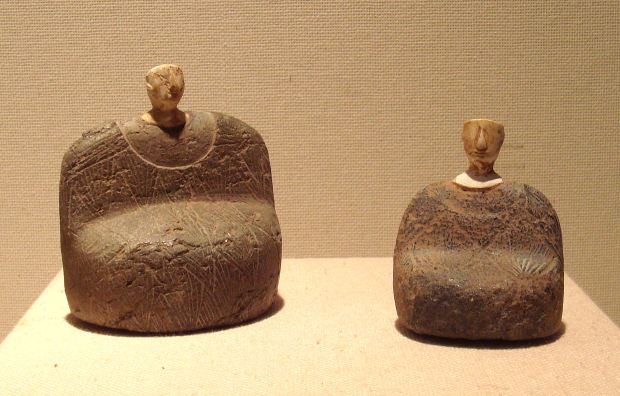
Episode 7: Indo-Europeans and Indo-Iranians
Here is the link to the episode, and the feed…
This, sort of, is just the beginning. The Indo-European, the Aryan, and the Indo-Iranian languages and terms are such thorny issues, and I cannot even pretend to have answered them all. Hopefully this will set the stage for future discussions, and some questions, comments, and discussions here.
Notice that I tend to spell the word Ariia in order to name the “Indo-Iranians” as they are, and to distinguish it from the Aryan, which is used in a modern, political sense.
Check out the Bibliography for some book and article suggestions…
For further reading…
If you are interested to know a little more about the people I talked about in episode 6, please follow these links:
The Lullubi: an article from Encylopaedia Iranica. Some images of the relief of Anubanini at Sar-e Pol-e Zahab. If you have a sense of humour, then read my attempt at being funny with the Lullubi, which I published a few years ago online!
Kassites: Again, the entry from EIr. A map of Kassite Babylonia. Here is a bit on Kassites which talks about their origin. Interesting proposal, and a huge bibliography, on Kassite Nippur.
The Gutians: the entry on Gutians from the EIr. Gutian Sumer, in digested form! You’ll see what I mean about people deciding how folk looked 4,000 years ago when you read this, arguing for a ‘Black’ origin of the Sumerians, or this one which has decided that they were Caucasian. This ‘Kurdish argument‘ is not actually half-bad in camparison…
The Manneans: the entry on Mannea from the EIr. Very good review of the Mannean pieces at the Met Museum (it’s a PDF).
Happy reading!
Episode 6: Peoples and Languages of Iran in the Early Iron Age
Well, here is Episode 6 for you, and the feed too…
I am stopping our chronological progression to talk a bit about the people we have been concerned with. I am going through a list of the civilisations, cultures, and languages of western Iran. We know of most of these through Assyrian and Sumerian, and occasionally Babylonian sources. I will talk a bit more about the Elamite culture, the Kassites and the Gutians, the Lullubi, and finally the Manneans. This will set up the scene for the whole “Indo-Iranian” migration story which seems to be overshadowing so much of early Iranian history.
I talk about the Loristan Bronzes in this episode. Here is an example of a couple of anthropomorphic horses from the BM. They are very common, so much so that you can even buy some of them on the Ebay! (I STRONGLY discourage you from doing this. Do NOT encourage looters and dealers!).


